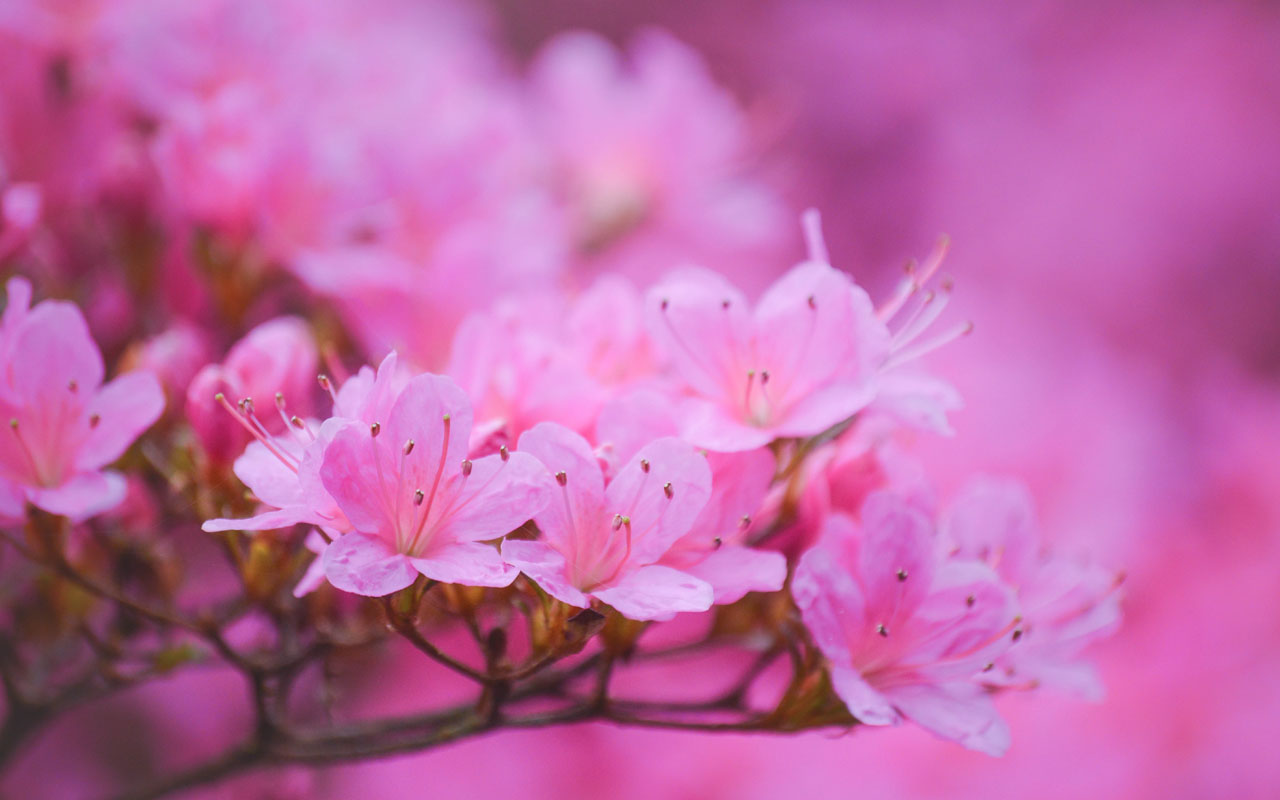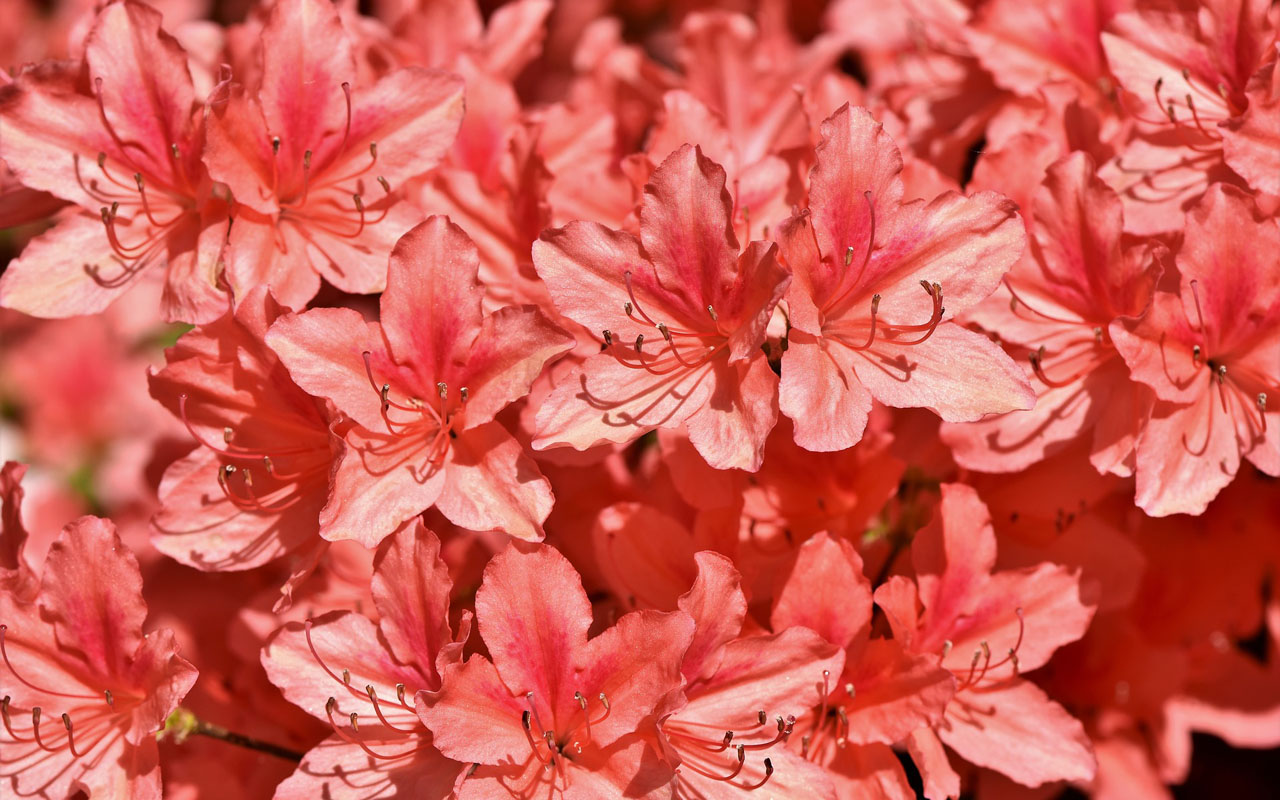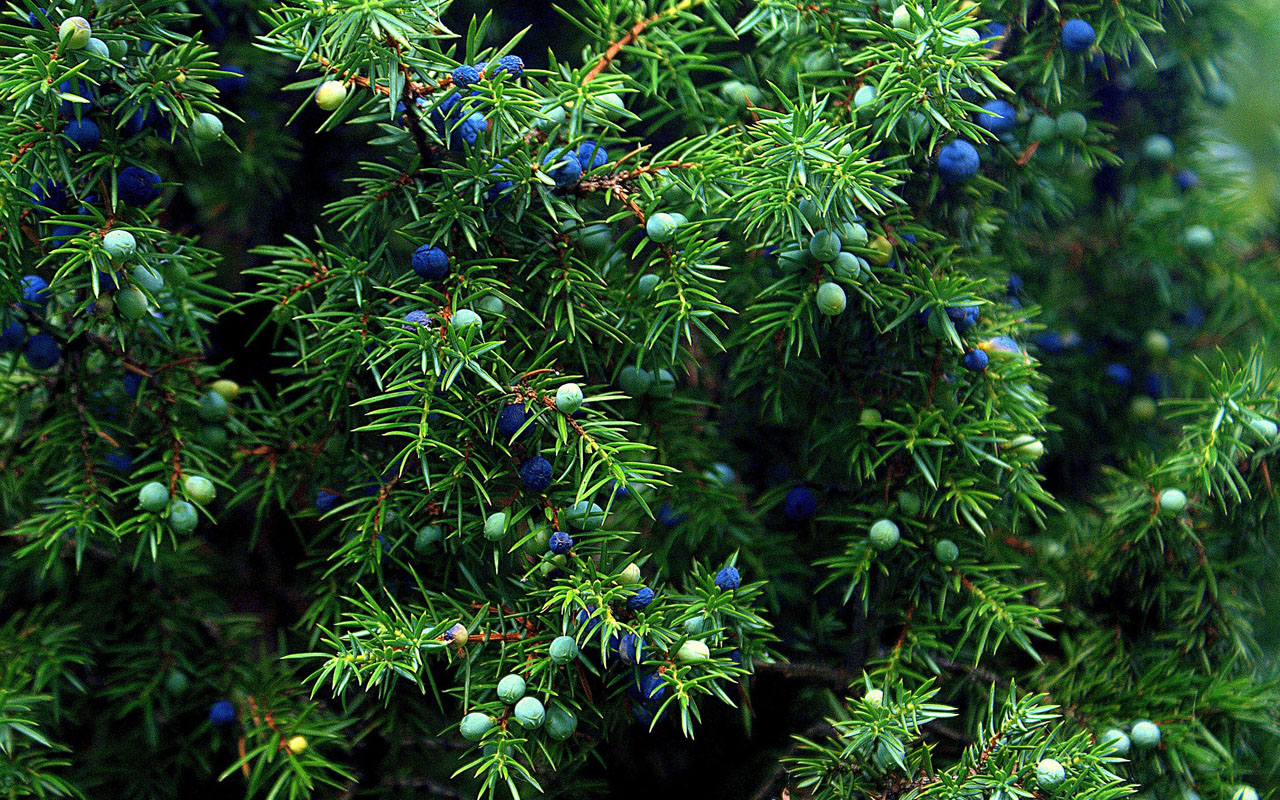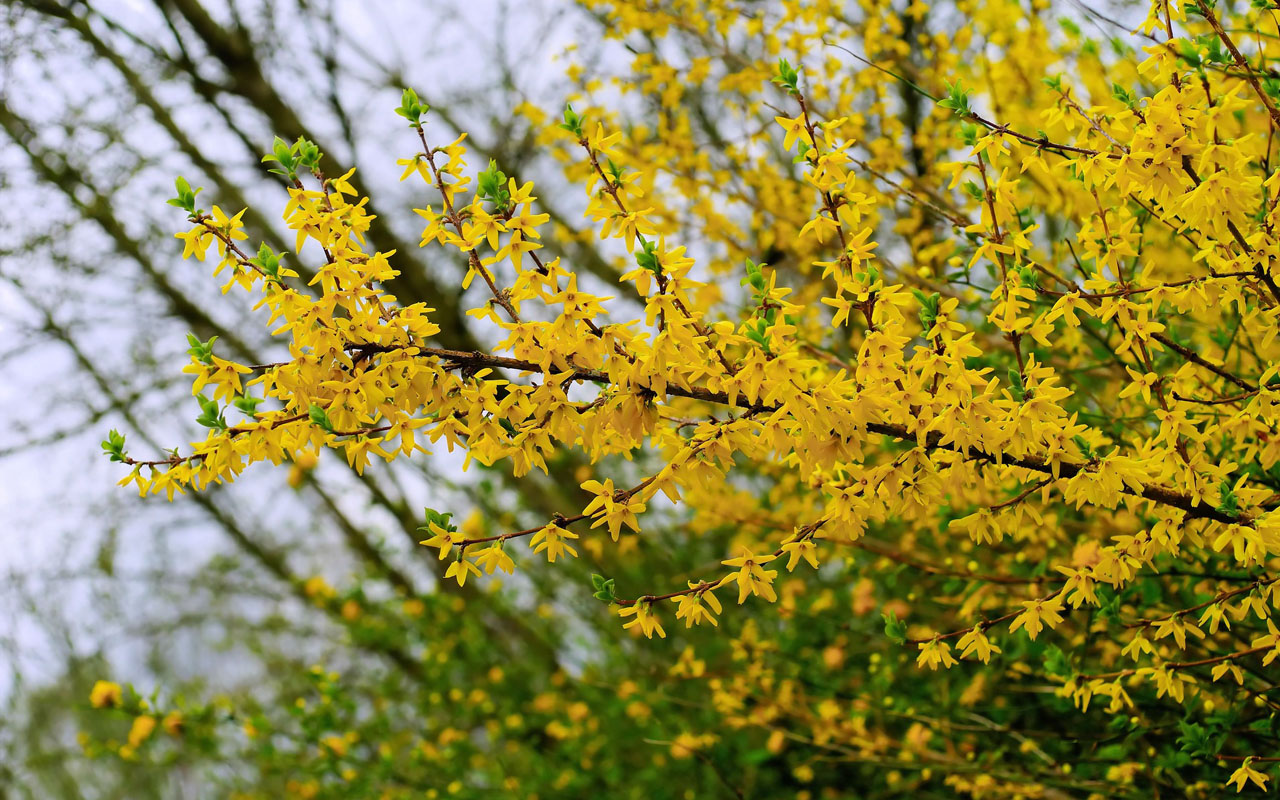Shrubs are a great way to add privacy, texture, color, screening from wind, and more to your landscape. There are many types of shrubs that do well in northern Virginia, but in this article, we highlight the 5 best shrubs that we recommend – plus one that is commonly seen in Virginia yards but is often not planted (or pruned!) correctly.
While you may think of spring as the time to add greenery to your landscape, fall is actually the perfect time to plant trees and shrubs. The warm soil and cool air encourage roots to develop, there are fewer pests to deal with, your other landscaping tasks will be tapering off, and it’s one less thing to worry about come the busy spring season. Plus, it gives the trees and shrubs the chance to settle into the area before the stress of producing blooms and/or leaves next spring.
5 Shrubs We Recommend For Northern VA Yards
Azaleas

Plant azaleas in fall and enjoy brightly colored flowers in spring
Azaleas are a show-stopper, with bright, colorful flowers covering the entire plant each spring.
Azaleas are deciduous, which means that they lose their leaves in fall and regrow them in the spring. They grow two to eight feet tall (depending on which variety you plant) and prefer light shade – the leaves will burn if they receive too much midday sun. Plant azaleas where they get some shelter, as they can suffer from windburn. Azaleas have shallow roots, so ensuring that they have moist soil and adding some mulch around them can ensure that the shrub will thrive.
Rhododendron

Azaleas are rhododendrons but not all rhododendrons are azaleas.
Azaleas are part of the rhododendron family, but there are differences when you’re referring to the plant generally referred to as a rhododendron. The main difference between them is that rhododendrons are evergreen, while azaleas drop their leaves each fall. Azaleas are also smaller and shorter. Rhododendrons have large, dark green leaves that stay put all year.
Both azaleas and rhododendrons thrive in acidic soil so be sure you know what kind of soil your yard contains before planting. Rhododendrons need part shade, just like their azalea cousins, and they also need moist, well-drained soil. An organic mulch will ensure that the ground stays moist and warm.
Note: Azaleas and rhododendrons are toxic to humans and animals.
Holly

Holly berries can provide a pop of color during the winter months.
Holly may make you think of Christmastime decorations, and that’s because the berries stick around into the winter, adding a nice pop of red color to your yard. If you are planting holly for the berries though, you will usually have to plant a female holly shrub (which produces the berries) and a male variety nearby to pollinate it. Or talk to your local garden center to see if they have a variety that does not need a male shrub nearby to produce berries.
Like the shrubs mentioned above, holly bushes like well-drained, slightly acidic soil. Mulch will help them retain moisture and regulate temperature. But unlike the shrubs mentioned earlier, most varieties of holly prefer full sun.
Yew

You should consider yew for your yard.
Canadian or American yew is a ground cover shrub that is usually wider than it is tall, though it can reach 3 to 6 feet high. English yews can grow much taller (25 to 40 feet) and are often shaped into hedges, topiaries, and doorways.
The evergreen needles on yews are a dark green that take on a reddish-brown tint in winter. The female varieties produce an orange-red berry, and the male varieties produce a lot of pollen. All types of yew are highly toxic, so use caution if kids or dogs will have easy access to them.
Yews survive well in almost any kind of condition (except excessive heat, but they should be fine in our area). They are slow-growing, need little maintenance, are not easily damaged by snow, and generally live a long time.
Juniper

Juniper bushes need plenty of room to grow
There are about 50 different species of juniper worldwide, and several that work here in our area, including one that has “Virginia” in its name (Juniperus virginiana).
Juniper is an evergreen shrub that grows low to the ground, needs very little maintenance, thrives in full sun, and likes well-drained soils. These shrubs do well in rock gardens and are often used as ground cover. When properly sited, they can help to prevent soil erosion and will often grow in hard-to-reach areas where other plants struggle to survive (as long as they get enough sun).
Juniper bushes spread out, sometimes as wide as 10 feet, so leave plenty of room for them to grow. Common juniper (Juniperus communis) produces light-blue berries in the spring and winter.
One Shrub We Like – But Don’t Recommend
Forsythia

Forsythia shrubs produce beautiful spring blooms – but you have to know how to prune them correctly
If you look forward to the first signs of spring, forsythia bushes are a beautiful way to let you know it has arrived. Their bright yellow, bell-shaped flowers are often the very first to bloom in early spring.
Forsythia loves full sun, is deciduous (it loses its leaves every fall), and is a vigorous shrub that’s easy to grow. However, keep in mind that while it does bloom early, the bloom time is usually short (around two weeks). It also grows to be quite large, with a fountain-shaped form. Unfortunately, most homeowners prune forsythia incorrectly, leading to a tangled mess of branches that often don’t flower.
We don’t recommend forsythia bushes for your landscape, therefore, unless you plant them with plenty of room to grow (they will grow to about 10 feet tall AND wide) and prune them properly.
More Options
Looking for other shrubs that do well in northern Virginia? Check out this list (including pictures) from the Virginia Cooperative Extension.
If you’re interested in something a little larger, we have some great choices for trees that grow well here –
After Planting …
Whatever shrubs (or trees) you decide to plant this fall, be sure to give them plenty of water for a few weeks before the ground freezes. Organic mulch can help retain moisture and keep the ground warmer. Just be sure to keep mulch pulled well away from the shrub’s base to prevent problems.
Get helpful tips, local news, inspiring stories, and more delivered right to your inbox every month. Don't miss another issue - join today!





